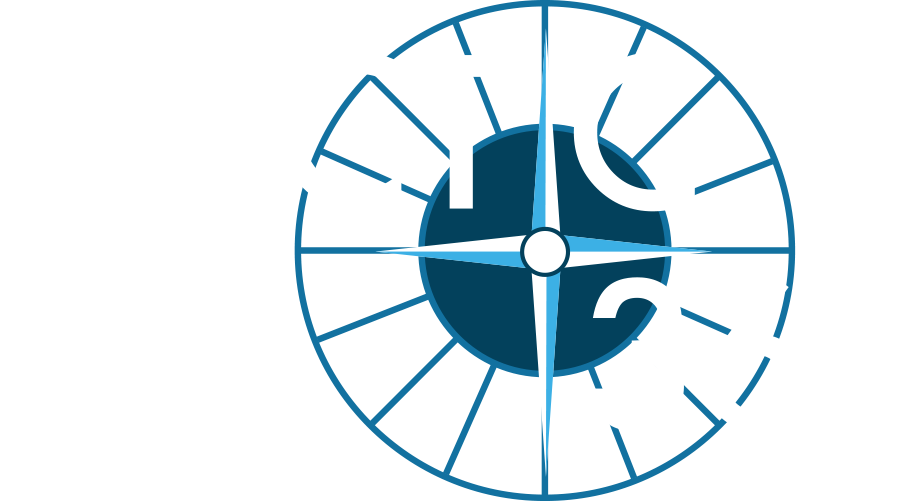When it comes to Canada-China Relations, it is time to look North
This is a repost of the original article by Jessica Shadian and Erica Wallis which appeared on the Policy Options website:
If there is one thing that the COVID-19 crisis has not brought to a halt, it is China’s Belt and Road Initiative, a global network of land and maritime infrastructure projects. In fact, while businesses around the world fold or face bankruptcies, China is taking this opportunity to make the most of the global liquidation sale, including in Canada. During May’s chaotic lockdown, China entered a bid to buy a struggling Northern mining company, TMAC Resources. TMAC operates the Doris North gold mine at its Hope Bay property in Nunavut. The property up until very recently was labelled as “Canada’s next gold mining district,” but TMAC encountered operational challenges.
In late June, TMAC’s shareholders voted overwhelmingly in favour of the company’s sale to the second-largest gold mine company in China, state-owned Shandong Gold Mining Co. (“SD Gold”). Only five years ago, TMAC had successfully raised several hundred million dollars and began trading on the Toronto Stock Exchange. It signed a landmark 20-year land tenure and socio-economic agreement with the Kitikmeot Inuit Association (the regional development corporation for the Kitikmeot region of Nunavut) and Nunavut Tunngavik Inc. (the organization that represents Nunavut Inuit and oversees land claim issues).
The potential sale of the company to a foreign state-owned company, however, goes well beyond the case of one firm’s struggle to cover its operational costs in the Canadian North. The potential takeover is part of a much broader set of interconnected issues that require national discussion.
Just as China sees COVID-19 as presenting an opportunity to buy strategic assets in Canada and around the world, perhaps this moment can also be an opportunity for Canada to think seriously about the strategic importance of its mining economy, its North, and the potential relevance of both in charting a new course for Canada’s deteriorating relations with China.
China in the Arctic
Since the onset of China’s Belt and Road Initiative (BRI) in 2013, infrastructure projects backed by Chinese investment can be found around the world and particularly in regions with weak economies and limited infrastructure. According to the Organization for Economic Co-operation and Development (OECD), BRI-participating economies represent more than one-third of global GDP and over half of the world’s population. The world’s least developed and most vulnerable countries are home to the majority of those investments. Taking advantage of the precarious situation of those countries and their need for infrastructure, China is heavily investing in roads, ports, mines, and other energy sources around the world despite the debt many of those countries may accumulate as a result.
In 2018, China announced its new ”Polar Silk Road” strategy, a vision to bring the Arctic into the realm of its BRI. Calling itself a “near-Arctic” state, China is now actively investing or aiming to invest in strategic mineral, energy, and infrastructure assets around the circumpolar North. Already China has spent billions of dollars on Russian liquified natural gas and supporting infrastructure, a research station in Iceland, and annual research expeditions through the Northwest Passage. Other Chinese Arctic investment plans include additional mines, energy projects, and infrastructure in Greenland, Iceland and Alaska.
Already in the Canadian North, Chinese companies are involved in joint-venture mining projects in Northern Quebec, Yukon, and Nunavut. Huawei, the Chinese company, has been involved in the creation of internet infrastructure throughout the Northern Territories since 2008, indicating a more holistic interest in the Canadian North. China views the Canadian North with the same lens and understanding as the fragile countries that comprise many of its BRI investments. In the Canadian North, China sees a barren and untapped opportunity and a host country with little leverage to bargain. Is China so wrong in its assumptions?
Canada’s Arctic strategy
The lack of infrastructure in Canada’s North has created a chance for China to fill a gap in a region that is growing by leaps and bounds in global geopolitical significance. Thawing ice has created new shipping corridors and increased access to the valuable mineral deposits used to create electronics and – paradoxically – the green technology needed for the transition to a global renewable energy economy.
Canada’s North remains one the least developed regions in the Arctic (and among OECD countries) despite decades of promises to provide basic infrastructure for roads, affordable energy, internet service and other amenities. These basics are required for self-sustaining economies of scale and to maintain the health and well-being of Northern communities. Though piecemeal investments and changes have been made since the federal government published its 2019 Arctic and Northern Policy Framework, a clear investment strategy with concrete goals and timeframes to generate economic growth has not yet been released and, thus, many of its aims have yet to be fulfilled.
Renewing the Canada-China relationship via the Arctic
The potential TMAC acquisition is made more complicated not just by China’s growing Arctic ambitions, but through increasing tensions in Canada-China relations altogether. Canada is currently stuck in the middle of growing China-US tensions triggered by the 2018 arrest of Huawei CFO Meng Wanzhou and the subsequent detention of Canadians Michael Kovrig and Michael Spavor.
From a strategic economic perspective, a blanket refusal of Chinese investment is impractical, naively simplistic, and not necessarily economic advantageous for Canada. While the Trump administration has become increasingly opposed to foreign direct investment from China, Chinese foreign policy will continue to be anchored in its BRI, and to what extent other countries will follow the path of the US remains to be seen.
As a middle-power, Canada needs a framework to ensure that decisions about foreign direct investment are based on what is in the strategic interests of Canada, and not just linked to the economic impacts of COVID-19 or the whims of the US. When it comes to the Hope Bay property in Nunavut, Shandong was ready to step in when the high costs of operating in the North became too great for TMAC to afford. As a state-owned company, Shandong Gold recognizes the long-term strategic interests in acquiring a gold miner that has been further destabilized by the pandemic. Currently, the Inuit organizations KIA and NTI are forced to choose between accepting the deal with Shandong or losing their own equity ownership of the mine if a deal is not made. In effect, while the deal may hold short-term benefits for TMAC shareholders, it is worth questioning whether the deal is serving the long-term interests of Canada. There is every reason to believe this scenario could repeat itself in the future.
While China presses ahead with its very well-coordinated, well-funded, and active Arctic foreign policy, Canada is still struggling to articulate a clear vision for its own North, including the significance of its strategic resources and an investment strategy to carry out that vision. While the narrative about the risks of investing in the North are far too common, less has been discussed (and is absent in the Arctic Policy Framework’s “bold new direction”) about the risks of not investing. What are the risks of foreign, state-owned companies owning significant shares of Canada’s Northern mining companies and related public infrastructure?
China has used the COVID-19 crisis as an opportunity to buy the natural resources it desperately needs at bargain-basement prices. Canada can also use this crisis as an opportunity to turn the page and forge a strategically different relationship with China. At the heart of it, the Canadian North has the resources and ocean access that China wants. Rather than reacting, this could be Canada’s opportunity to invest in its North so that China buys Canadian-owned minerals and other resources at market value and not entire companies at a time of crisis. At the very least, it could help contribute to nation-building and the creation of prosperous and sustainable Northern economies.
The risks of not investing could include compromising Canada’s security, sovereignty, economic prosperity and leadership in the Arctic and its strategic role around the world. If Canadians do not start rethinking risk when it comes to the North, Canada might soon find itself outmanoeuvred.
Photo: Summer colours in on the tundra near Cambridge Bay, Nunavut. Shutterstock/By Sophia Granchinho
Jessica Shadian is the president and CEO of Arctic360, which works with government and the private sector to attract investment to the North, and a distinguished senior fellow at the Bill Graham Centre for Contemporary International History at the University of Toronto.
Erica Wallis is a Master of Global Affairs student at the Munk School of Global Affairs and Public Policy with a specialization in East Asia Policy, and an Arctic360 Summer Intern.
Recent Posts
Will Small modular [nuclear] reactors be part of net zero carbon emissions in the North?
Will Small modular [nuclear] reactors be part of net zero carbon emissions in the North? If we’re in a war against climate change, then Canada’s north is arguably on the front
Arctic360 contributes to the Parliamentary Affairs subcommittee Report for “A SECURE AND SOVEREIGN ARCTIC”
Arctic360's Jessica Shadian and Madeleine Redfern contribute to the Parliamentary Affairs subcommittee Report of the Standing Committee on National Defence "A SECURE AND SOVEREIGN ARCTIC" Dr. Shadian underlined that "we need
‘Discussions with Diplomats’ Returns with a Nordic Diplomacy Panel
'Discussions with Diplomats' Returns with a Nordic Diplomacy Panel Braving snowy conditions in both Canadian and Nordic spirit, on February 22, 2023, students gathered at the Munk Observatory for the highly
Strengthening the
North American Arctic
Arctic360 is dedicated to educating and engaging with the public about the pressing issues and potential solutions for building a prosperous and sustainable Arctic region. Contact us if you have any questions about our activities or if you would like to be more involved.




